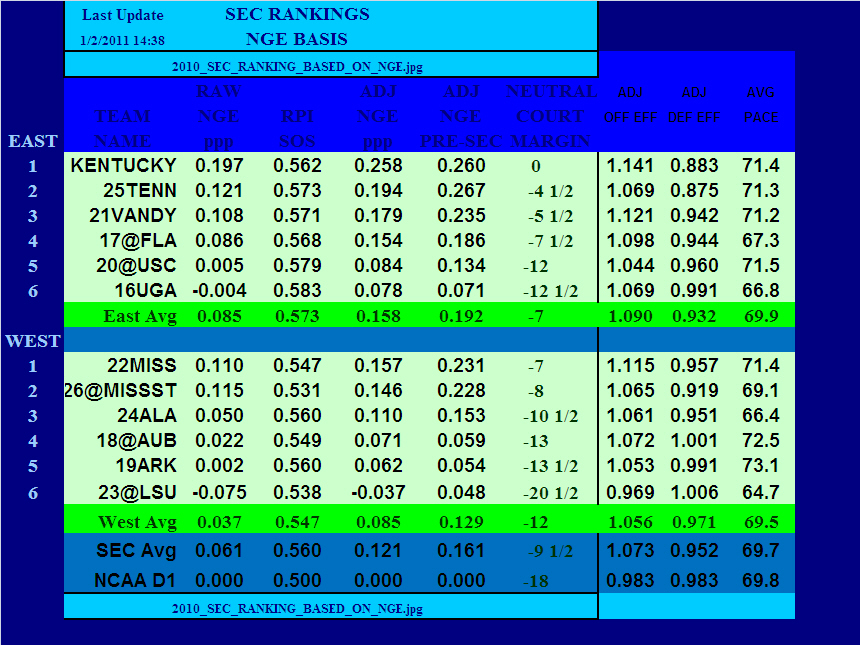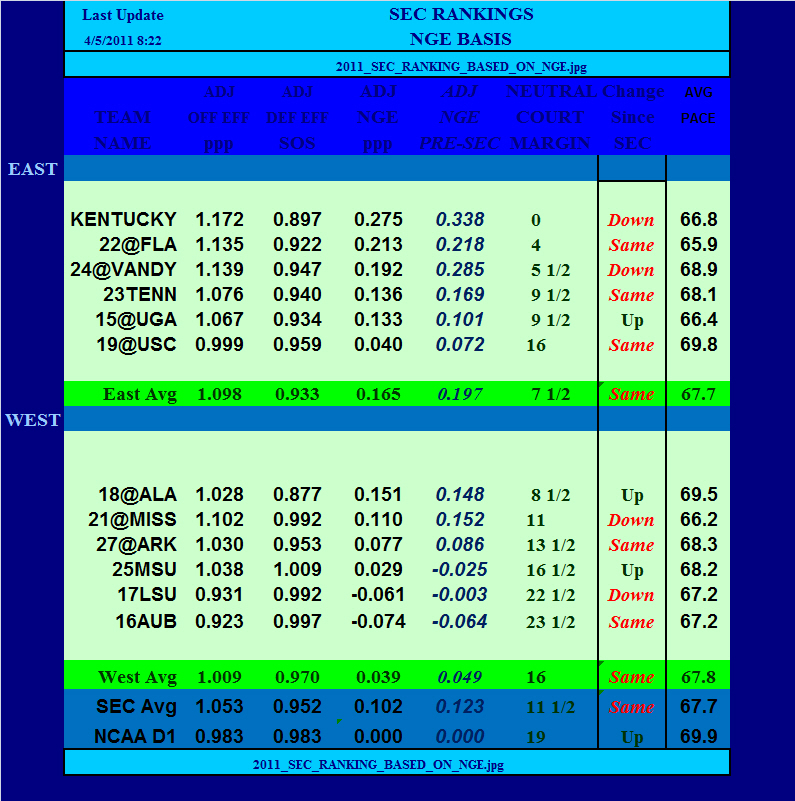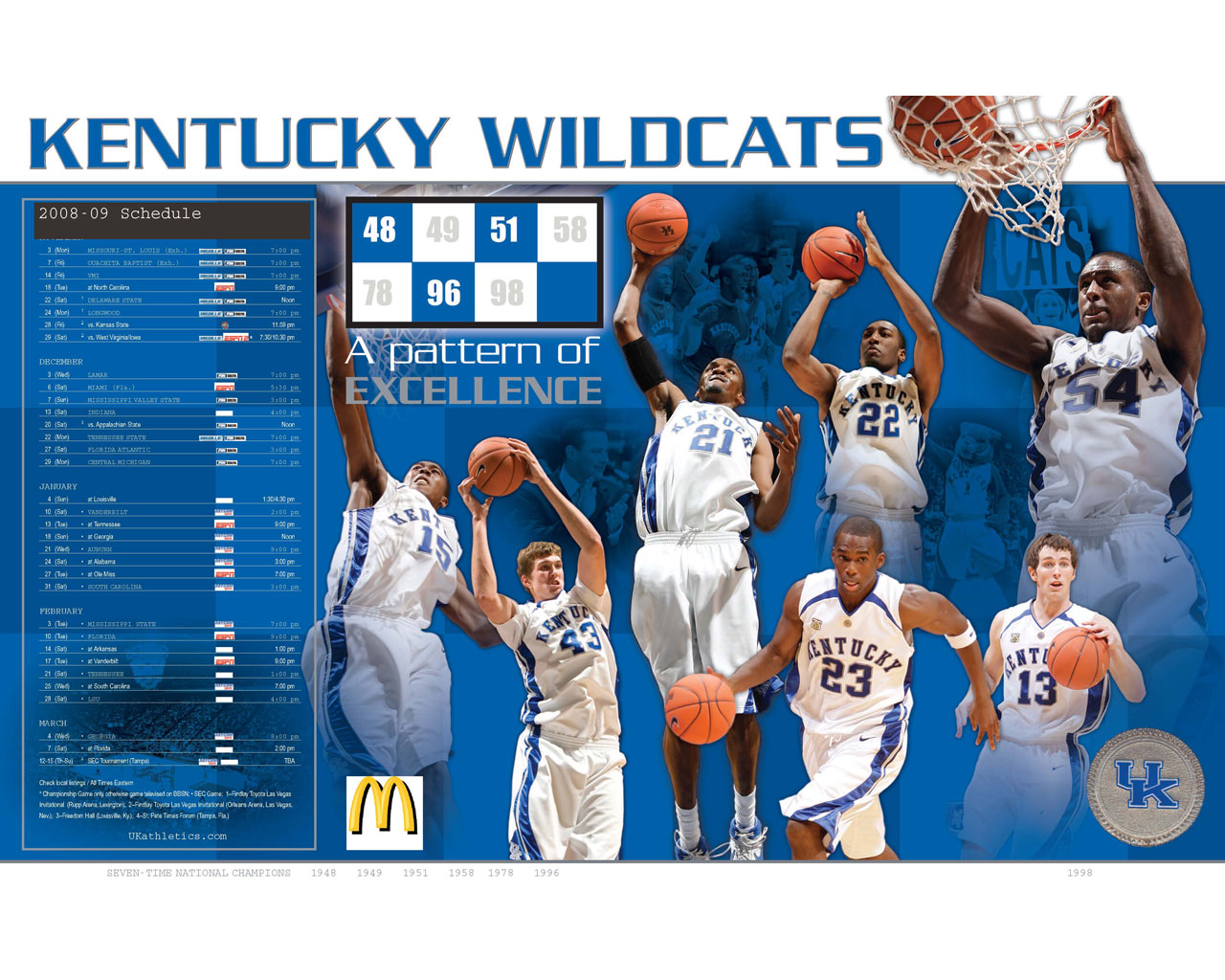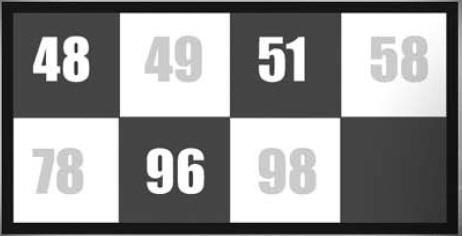BIG BLUE FANS FOR

BASKETBALL
2010-11 Season Analytical Writings
18B
HOW DOES THE SEC STRENGTH IN 2011 COMPARE TO 2010?
In 2010, the Kentucky Wildcats navigated their way through the SEC regular season with only 2 losses [at South Carolina and at Tennessee]. On the season, seven of the 12 teams completed their season with an overall winning record, and six of them finished the SEC season with a winning conference record. Kentucky's 14-2 set the pace, followed by Vanderbilt's 12-4, Tennessee's 11-5, and three teams with 9-7 SEC records [Florida, Mississippi State, and Mississippi]. In terms of National standing, all of these teams finished in the top 51 by Pomeroy.
Yet, as the Kentucky dominance emerged through the SEC season, critics rose last year to suggest that the SEC was weak [to justify or explain away the Kentucky dominance]. However, Pomeroy ranked the SEC as the fifth toughest conference for 2010 behind the Big 10 and ahead of the Pac 10. In comparison, Pomeroy rated the SEC 6th in 2009, and 6 th in 2008. Therefore, if anything, the SEC was the toughest it had been is a few years in 2010 when the Cats stepped up and re-asserted itself.
Wind the clock forward almost a year, and as the 2011 SEC season is ready to begin, it is becoming clear again that Kentucky will once again control the SEC, and similar voices are rising already to declare the SEC as weak. As of January 2, 2011, Pomeroy does have the SEC rated as #6, behind the Pac 10. Therefore, to some extent the criticism may be justified that the SEC has retreated from is 5 th place position of 2010.

In 2010, Kentucky posted pre-SEC season Adjusted NGE of 0.260 ppp, with Tennessee having a slightly higher pre-SEC value at 0.267 ppp. The Pre-SEC Adjusted NGE values for all 12 SEC teams are shown in this first Table in the column Titled “ADJ NGE PRE-SEC.” This value will provide the best basis for comparison between the strength of the SEC in 2010 and 2011.
All six of the SEC East teams posted positive Adjusted NGE values, with an average in the East of 0.192 ppp. All six SEC West teams posted positive values as well, ranging from a high of 0.231 ppp by Ole Miss to a low of -0.048 by LSU. The average SEC West Adjusted NGE values was 0.129 ppp, and the overall SEC average Adjusted NGE in 2010 was 0.161 ppp.

Compare the 2010 values for all the teams to the current Adjusted NGE values for the 12 SEC teams prior to the 2011 SEC Season. The SEC East is similar with all six teams posting positive values and an average of 0.188 ppp. However, the SEC West is clearly weaker in 2011 than it was at the same time last season, with only 3 of the 6 teams posting a clearly positive value in the non-conference schedule, and two of the SEC West teams clearly in negative territory.
So, it appears that the SEC is weaker in 2011 than it was in 2010. First, the SEC West is clearly weaker from top to bottom. The highest Adjusted NGE values in 2010 were Mississippi and Mississippi State at about 0.23 ppp whereas the highest Adjusted NGE values in 2011 are 0.16 ppp by Mississippi and 0.125 ppp by Alabama. The lowest values are lower in 2011 than in 2010, and the average is lower as well. The SEC East presents greater subtlety. The average for the SEC East is similar, 0.192 ppp in 2010 as compared to 0.188 ppp in 2011. However, these averages are slightly misleading because of the strength of the 2011 Kentucky team as compared to 2010. The average of the remaining 5 SEC East teams was 0.179 ppp in 2010 and has fallen to 0.158 ppp in 2011. Therefore, other than Kentucky, who is clearly stronger as they prepare to begin the SEC season in 2011, the rest of the East is weaker by a significant amount.
However, Vanderbilt provides yet another situation for closer study in 2011. At 0.265 ppp entering the SEC season, Vanderbilt would have been as strong as the two strongest teams in the SEC in 2010. Therefore, the 2011 SEC East has one team playing as good as the best of 2010, and one team playing considerably better basketball at this stage of 2011 than the best of the conference [Kentucky and Tennessee] was playing at this stage of the 2010 season. However, positions 3 through 6 in the East are weaker in 2011 than 2010, and all six of the SEC West teams are weaker.
Submitted by Richard Cheeks


Submitted by Richard Cheeks
![]()
To Cats Close Non-Conference Play Against Penn
Go Back
Cats Easily Handle Louisville by 15 Points, Move to 11-2
Copyright 2010
SugarHill Communications of Kentucky
All Rights Reserved